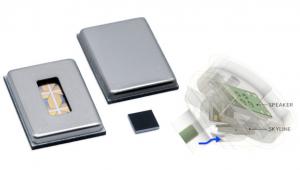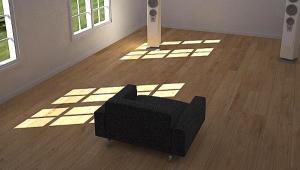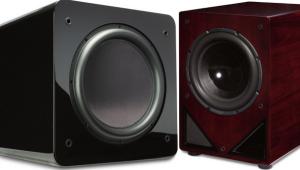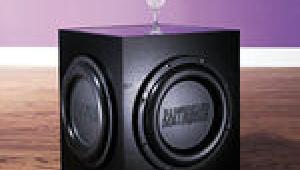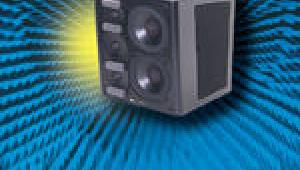Face Off: Surround-Speaker-Configuration Wars Page 2
 Overwhelmed by the number of test options available, I thought we'd start with a simple comparison of dipole versus monopole surround speakers in a 5.1 setup. This would give the panel an idea of the difference between dipole and direct-radiating speakers. The surround speakers were placed to the sides of the listening area; there were no rear speakers, and the software had no surround back information. I started with a track from True Lies that offers some good surround sound effects, as a pair of Marine Corps Harrier jets exchange missiles with Middle Eastern terrorists who are driving across a bridge in the Florida Keys. The jets fly side to side and front to back while dodging missiles that travel from front right to rear left. Ultimately, the bad guys go down, and the Harriers drop the bridge in a dramatic explosion. I was sure, having heard these types of comparisons before with different material, that everyone would choose dipoles and that I could perform the remaining tests once, without having to repeat them with monopoles on the sides.
Overwhelmed by the number of test options available, I thought we'd start with a simple comparison of dipole versus monopole surround speakers in a 5.1 setup. This would give the panel an idea of the difference between dipole and direct-radiating speakers. The surround speakers were placed to the sides of the listening area; there were no rear speakers, and the software had no surround back information. I started with a track from True Lies that offers some good surround sound effects, as a pair of Marine Corps Harrier jets exchange missiles with Middle Eastern terrorists who are driving across a bridge in the Florida Keys. The jets fly side to side and front to back while dodging missiles that travel from front right to rear left. Ultimately, the bad guys go down, and the Harriers drop the bridge in a dramatic explosion. I was sure, having heard these types of comparisons before with different material, that everyone would choose dipoles and that I could perform the remaining tests once, without having to repeat them with monopoles on the sides. Sitting to the side and close to the right surround speaker, I found the ambient surround effects distracting when the speakers were configured in direct-radiating mode. The effects seemed too "in your face" and reminded me that I was watching a movie. John, Brandon, and Jason all agreed on one thing—that I was off my rocker! All of them preferred the soundfield created by the direct-radiating speakers more than the dipoles. Brandon mentioned that the front-to-back missile effect actually seemed more noticeable with the dipole speakers and that it was more entertaining with the monopoles. Jason did point out that the soundfield of the dipole speakers seemed more filmlike, meaning that it reminded him of the sound he was used to in a theater, but he still preferred the direct-radiating speakers.

Have we been wrong to recommend dipoles all these years? Had I just been duped by the marketing forces at THX? The panel overwhelmingly preferred the monopole speakers, and we were only one test into the study. This wasn't a definitive analysis, mind you, and I was really more interested in how the rear speaker would affect things, so I didn't spend much more time on this configuration. Later results did require that I revisit the issue, however. Since I had committed to going along with the panel's opinion, I used direct-radiating side speakers for the next group of tests.
Single Dipole Versus Single Monopole
Continuing with the comparison, I wanted to determine if the panelists would prefer a monopole or dipole speaker for the EX or rear channel. For this test, I used the THX Tex trailer from the THX Surround EX demo disc (not available to consumers). This track has the THX service robot flying around the room, drilling in the right channel, hammering in the left channel, sawing in the surround back channel, and then heading back to front and kicking the THX sign.
This time, everyone came to the same conclusion—we agreed that we all liked the dipole speaker for the rear channel! The general consensus was that the sound of the traveling robot was smoother and less jumpy with the dipole speaker than with the direct speaker. Brandon mentioned that it was much easier to tell where the sound was coming from with the monopole rear channel, for better or for worse, although he still admitted a preference for the dipole soundfield. Keep in mind that the side speakers were monopole. At this point, we seemed to have conflicting results or, at least, different conclusions depending on what channel we were evaluating. Some of this may have to do with placement, since one test used rear and side speakers and the other used only side speakers. I continued with the test, as planned, even though I knew that we'd definitely need to revisit some of this later.
